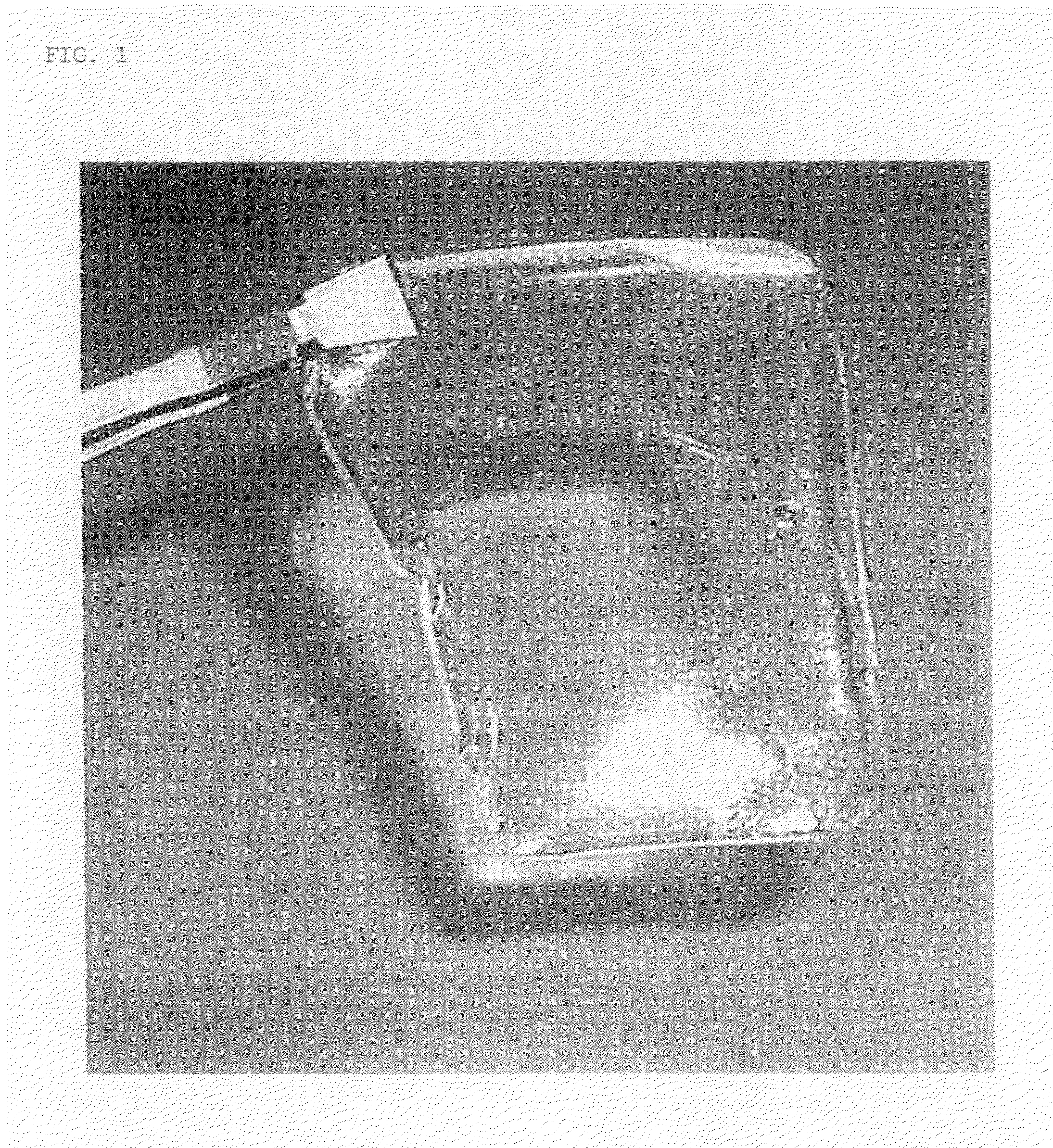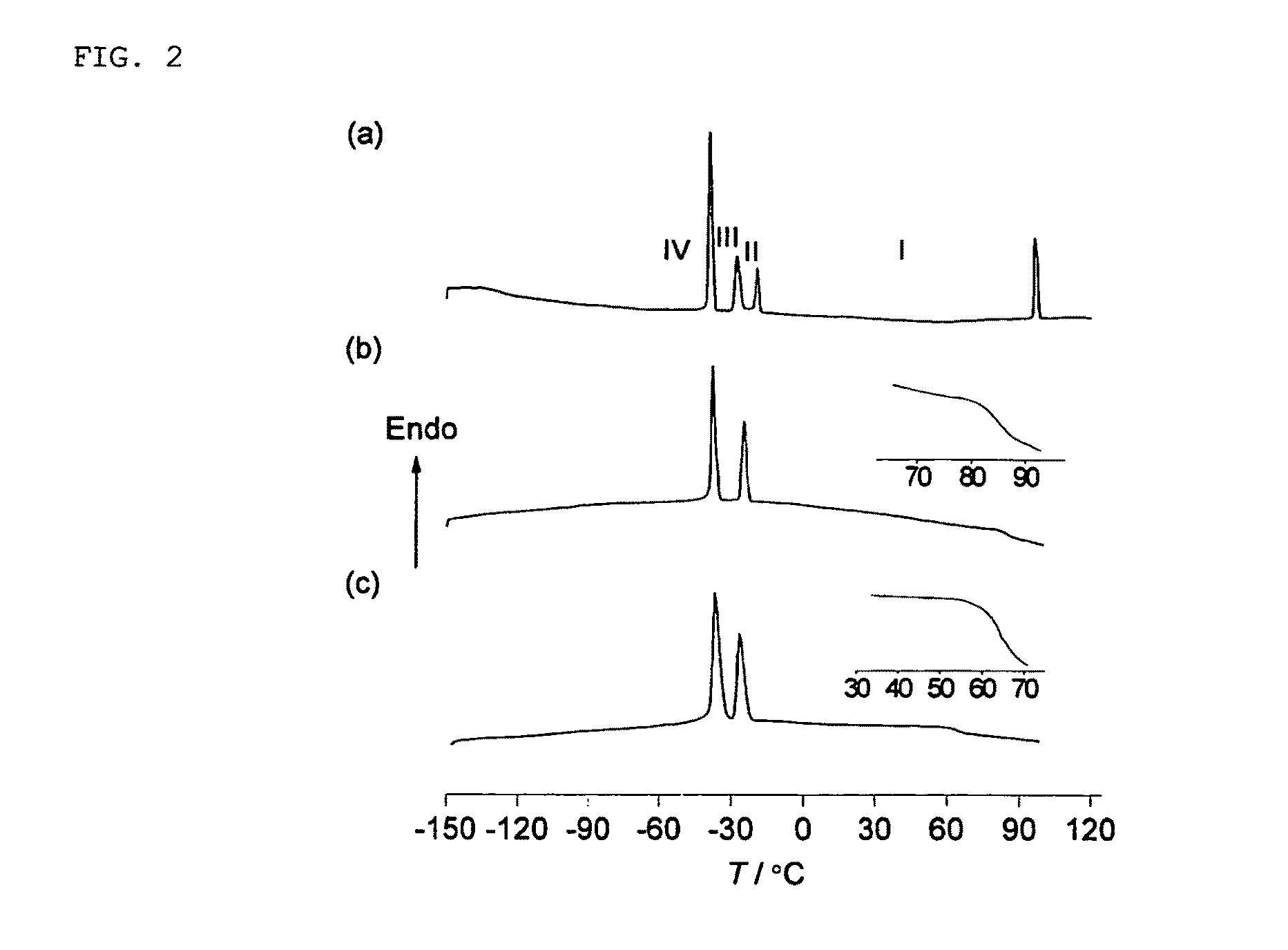Plastic crystal
a technology of plastic crystals and crystal structures, applied in the field of plastic crystals, can solve the problems of limiting the practical level of high conductivity and/or usable temperature range of known materials, affecting the stability of the material,
- Summary
- Abstract
- Description
- Claims
- Application Information
AI Technical Summary
Benefits of technology
Problems solved by technology
Method used
Image
Examples
example 1
[0050]All operations for the preparation and measurement of a material sensitive to air were conducted in an argon-filled glove box (Miwa MDB-1.5-1000T, H2O and O21H at 399.65 MHz, 19F at 376.05 MHz, 11B at 128.15 MHz) using anhydrous acetone-d6 as a solvent. Chemical shifts (d) in BF3.Et2O were measured using TMS as an internal standard (1H) and CCl3F as an external standard, respectively, in acetone-d6 (19F) and CDCl3 (11B).
[0051]N1223[CF3BF3] was prepared in the same manner as that disclosed in “Z.-B. Zhou, H. Matsumoto, K. Tatsumi, Chem. Eur. J. 11 (2005) 752”. A lithium trifluoromethyl trifluoroborate-dimethyl carbonate complex (Li[CF3BF3].DMC, 1:1) was prepared in the same manner as used to prepare Li[C2F5BF3].DMC, which is an analog thereof. Specifically, the lithium trifluoromethyl trifluoroborate-dimethyl carbonate complex was prepared in dimethyl carbonate (DMC) by metathesis reaction between K[CF3BF3] and LiBF4 (Z.-B. Zhou, M. Takeda, T. Fujii, M. Ue, J. Electrochem. Soc....
example 2
[0077]FIG. 5 shows the results of iodine doping, wherein (□) indicates only N1223[CF3BF3]: (⋄; N1223[CF3BF3]0.67I0.33) indicates after doping with iodide ions: and (▪; N11223[CF3BF3]0.67 I0.23 I3 0.1) indicates after further doping with iodine. As is clear from the results shown in FIG. 5, a plastic crystal to which iodide ions were further doped is usable as a solid electrolyte for a dye-sensitized solar cell.
PUM
| Property | Measurement | Unit |
|---|---|---|
| Temperature | aaaaa | aaaaa |
| Electrical conductivity | aaaaa | aaaaa |
| Stability | aaaaa | aaaaa |
Abstract
Description
Claims
Application Information
 Login to View More
Login to View More - R&D
- Intellectual Property
- Life Sciences
- Materials
- Tech Scout
- Unparalleled Data Quality
- Higher Quality Content
- 60% Fewer Hallucinations
Browse by: Latest US Patents, China's latest patents, Technical Efficacy Thesaurus, Application Domain, Technology Topic, Popular Technical Reports.
© 2025 PatSnap. All rights reserved.Legal|Privacy policy|Modern Slavery Act Transparency Statement|Sitemap|About US| Contact US: help@patsnap.com



